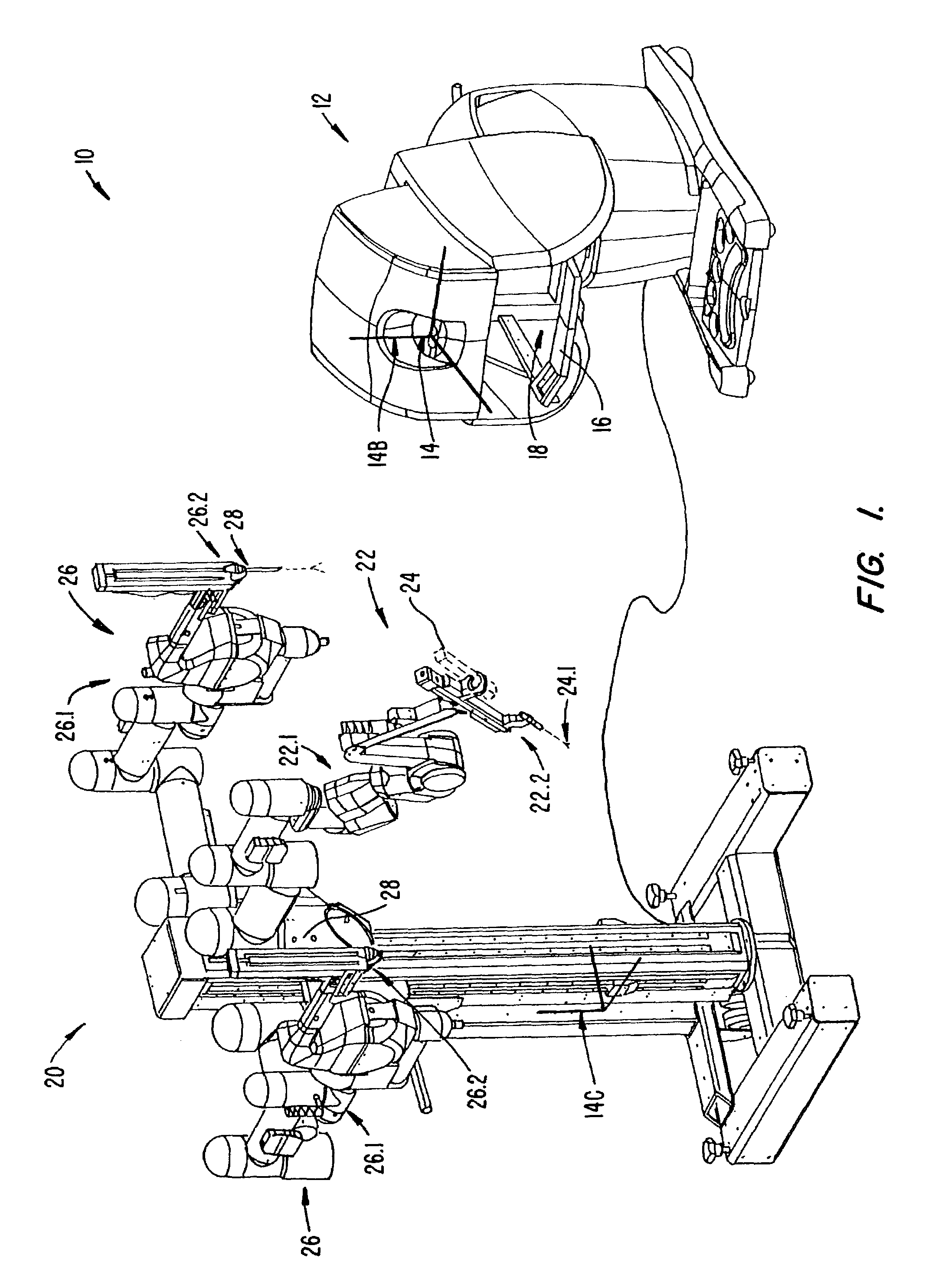Image shifting apparatus and method for a telerobotic system
a technology of telerobotic system and image shifting, which is applied in the direction of electrical programme control, program control, instruments, etc., can solve the problems of expanding the use of minimally invasive techniques, reducing the number of surgeries currently using minimally invasive techniques, and reducing the number of surgeries
- Summary
- Abstract
- Description
- Claims
- Application Information
AI Technical Summary
Benefits of technology
Problems solved by technology
Method used
Image
Examples
Embodiment Construction
[0041]Although this invention will now be described with reference to its application in the field of minimally invasive surgery, it is to be appreciated that the invention is not to be limited to use in this field only. It is envisaged that the invention can be applied in various fields using telerobotic systems. For example, the invention can be applied in telerobotic systems used to perform non-minimally invasive surgical procedures, or inspection procedures, or the like. The invention can also be applied in telerobotic systems used to handle hazardous substances, such as, nuclear fuel, nuclear waste, and the like. The invention can yet further be applied in telerobotic systems used in the manufacturing industry, for example, to assemble parts, to perform operations such as welding, and / or the like.
[0042]As used herein, objects (and / or images) appear “substantially connected” if a direction of an incremental positional movement of a first object matches the direction of an increm...
PUM
 Login to View More
Login to View More Abstract
Description
Claims
Application Information
 Login to View More
Login to View More - R&D
- Intellectual Property
- Life Sciences
- Materials
- Tech Scout
- Unparalleled Data Quality
- Higher Quality Content
- 60% Fewer Hallucinations
Browse by: Latest US Patents, China's latest patents, Technical Efficacy Thesaurus, Application Domain, Technology Topic, Popular Technical Reports.
© 2025 PatSnap. All rights reserved.Legal|Privacy policy|Modern Slavery Act Transparency Statement|Sitemap|About US| Contact US: help@patsnap.com



